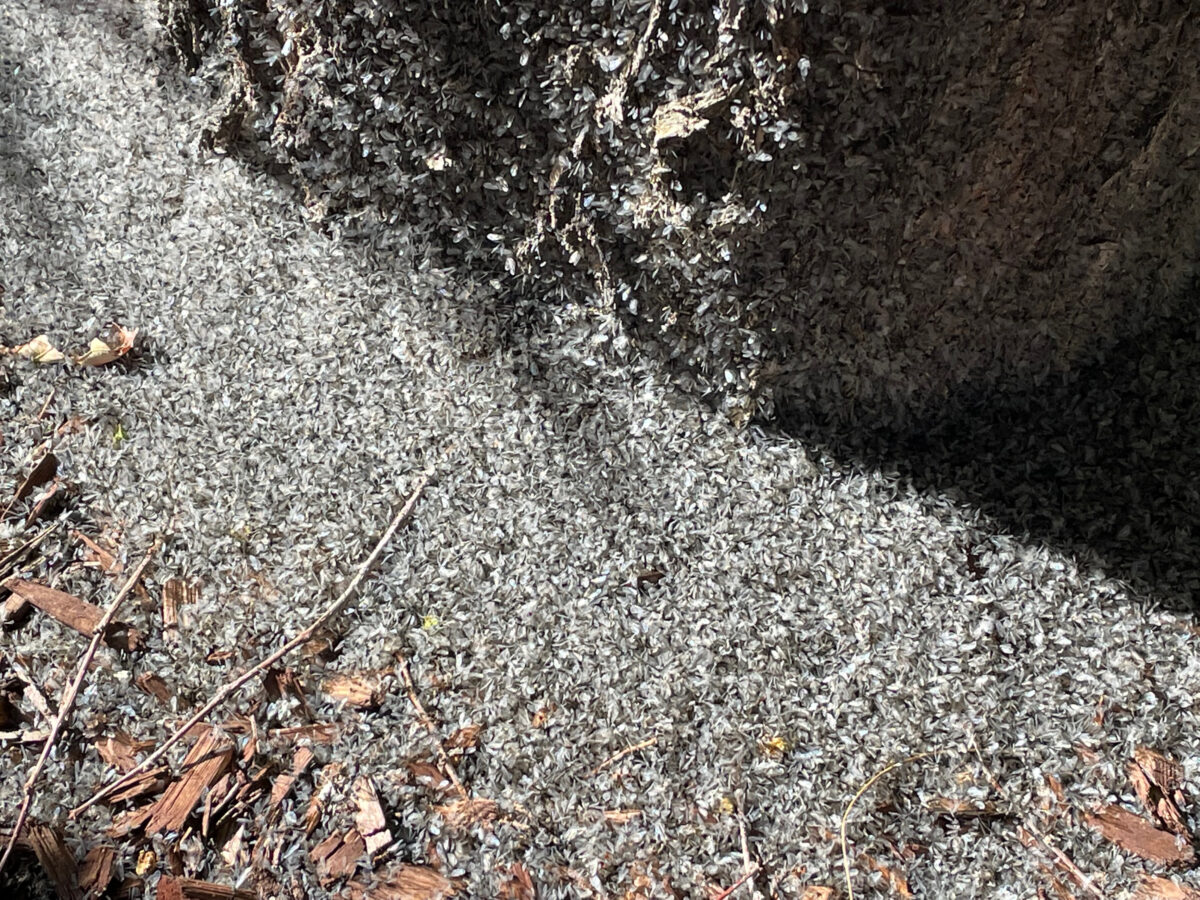Garden Help Desk: Aphids causing problems for variety of plants
I planted a Red Lake Currant bush this spring. I thought it was just having trouble getting established, but I finally took a closer look at it, then looked at an Extension fact sheet, and I think I have both currant aphids and currant fruit flies. I’ve attached some photos. Does that look like the problem? Is there anything I should do at this time of year?
This does look like Currant aphids, but the dark winged insects look more like winged aphids than currant fruit flies. This is the time of year when the aphids produce a generation of winged aphids that will mate and lay eggs to overwinter on the canes.
There are some things you can do to reduce your aphid problem next year. Next spring when the buds begin to swell (but before leaves come out), spray your bush with a dormant oil spray. This will suffocate many of the overwintering eggs.
During the growing season every year, don’t wait until you see aphid damage on your currant bush. Instead, scout the bush at least 2-3 times per week looking for aphids. Check the undersides of the leaves and at the first signs of aphids start using some control measures.
Many times, aphids can be controlled by hosing them off with strong sprays of water several times a week. If that isn’t effective, then applying insecticidal soap every week or two for several weeks should help. Insecticidal soap only works on contact, so thorough coverage is important, especially on the undersides of the leaves.
Lush tender growth is attractive to aphids. To reduce the aphid risk for your currant bush:
- Avoid overfertilizing- just a moderate application of nitrogen in the spring will do.
- Avoid overwatering- a deep soak once a week in the summer, and less often in the spring and fall, is enough for your currant bush.
- Remove any suckers at the base of your bush every season to eliminate those attractive feeding sites
- Prune out excess crowded growth in the canopy of your currant bush to reduce humidity in the bush and discourage aphids.
We have an invasion of bugs. There are millions of bugs around the base of our trees in our front yard and in the air and on the bark, but I have not seen them going after the leaves. I would like to know if these are dangerous to our trees and how to control them.
These look like Woolly elm aphids. The aphids’ bodies have a waxy coating that can make them look cottony or dusky. You’re seeing them on your trees because zelkovas are members of the elm family.
Woolly elm aphids spend the early spring weather on elms and then leave by mid-summer to spend the summer on their alternate host- serviceberry. In the fall, a generation of winged woolly elm aphids is produced, and that generation returns to elms to lay eggs that will overwinter and hatch in the spring.
Woolly elm aphids feed on serviceberry roots during the summer and the feeding can damage the roots and affect the vigor of the plants. The springtime aphid feeding on elms, including zelkovas, can be unsightly, causing leaf distortion or rolling, but it doesn’t typically affect the health of elm trees.
You have a few control options if you want to reduce their population.
- You can hose them off with strong sprays of water every day for a couple of weeks. This won’t kill all the aphids, but it will reduce their numbers and won’t it involve chemicals if that’s your preference.
- You can spray them with insecticidal soap if you want to reduce harm to beneficial insects that may be on the tree. Spray about once a week for a few weeks or until you no longer see more than a few aphids. Insecticidal soap only works on contact, so thorough coverage is important.
- You can spray the trees with permethrin or another pyrethroid. This will also kill any other insects, including beneficial insects, on the trees. Read the label on the product and follow the directions carefully.
- When currant aphids feed on current leaves it can cause cupping, curling, anddiscoloration. (Courtesy photo)
- Just like many other aphid species, Currant aphids can produce a winged generation. (Courtesy photo)
- Woolly elm aphids leave their serviceberry hosts and the end of the summer and fly to elms where they’ll lay their eggs in bark crevices to overwinter. (Courtesy photo)
- Woolly elm aphids produce a generation when it’s time to migrate from their spring host to their summer host (serviceberry) and then again in the fall to migrate back to elms for the winter. (Courtesy photo)
- Woolly elm aphids swarming at base of Zelkova. (Courtesy photo)













